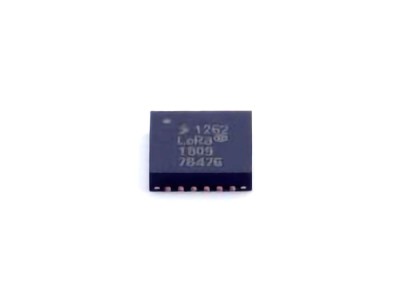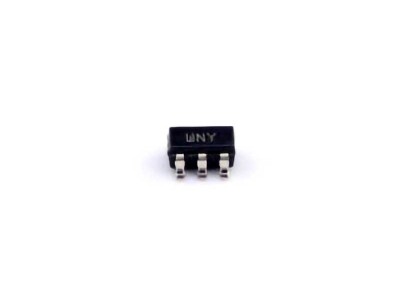
This article explores the versatile 74HC138D digital decoder, focusing on its applications in circuit design and optimization. It offers insights into how this integrated circuit (IC) plays a crucial role in complex systems, highlighting design techniques, performance enhancements, and practical uses in modern electronics.
74HC138D, digital decoders, circuit design, IC optimization, multiplexing, logic functions, digital electronics, decoder applications, electronics optimization
Understanding the 74HC138D Decoder and Its Key Applications
In the world of digital electronics, the 74HC138D is a commonly used integrated circuit (IC) that functions as a 3-to-8 line decoder. It plays a pivotal role in the design and operation of many modern electronic systems, offering both flexibility and efficiency. This article delves into the practical applications of the 74HC138D decoder, its design characteristics, and how it can be optimized for high-performance circuits.
What is the 74HC138D Decoder?
The 74HC138D is an 8-line output decoder IC built on the CMOS technology, providing 3-bit binary-to-octal decoding with active low outputs. This means that it converts a 3-bit binary input into one of eight active-low outputs, making it highly suitable for applications like multiplexing, Memory addressing, and routing signals within a circuit. It features a wide range of applications, from simple logic circuits to complex Communication and control systems.
Key Features of the 74HC138D:
Three-bit to eight-line decoding: The IC decodes a 3-bit binary input into one of eight active-low outputs.
Active low outputs: The outputs are active low, meaning they are driven to a low voltage level (logic 0) when selected, and remain high (logic 1) otherwise.
Enable inputs: It features two enable inputs (G1, G2A, G2B) that must be active for the decoder to function. If these inputs are disab LED , all outputs remain inactive (high).
CMOS technology: The IC uses complementary metal-oxide-semiconductor (CMOS) technology, making it Power -efficient and suitable for a broad range of voltages (2V to 6V).
High-speed operation: With fast switching times, it is capable of high-speed data processing, making it ideal for time-sensitive applications.
Applications of the 74HC138D Decoder
The 74HC138D decoder finds its way into a variety of applications across different domains of digital electronics. Below, we explore some of its prominent uses:
Multiplexing and Demultiplexing:
One of the most common applications of the 74HC138D decoder is in multiplexing and demultiplexing systems. In multiplexing, multiple input signals are routed through a single communication line, while demultiplexing involves routing a single input signal to multiple outputs. The 74HC138D enables these operations by decoding binary inputs and selecting the appropriate output channel based on the decoded signal.
Memory Address Decoding:
In microprocessor and memory systems, the 74HC138D plays a key role in memory address decoding. When a processor addresses a particular memory location, the decoder ensures that the correct memory module is activated. This is especially useful in systems that utilize a large memory space, as it allows efficient selection of memory banks or pages without requiring complex addressing logic.
Digital Signal Routing:
The 74HC138D is used in digital signal routing, where it helps in selecting specific signals based on control logic. For instance, in communication systems, different channels or devices may be routed through a common data path, with the decoder determining which one is activated at any given time.
Control Systems:
In embedded control systems, decoders like the 74HC138D are used to select particular control lines or states. For example, it could be used to control the activation of specific modules in a robotic system or industrial control system, based on a set of inputs from sensors or external control devices.
LED and Display Drivers :
The 74HC138D decoder can be employed in driving 7-segment LED displays, especially when displaying multiple outputs based on a set of inputs. It decodes the binary values from a microcontroller or other logic sources and selects the correct output for each segment of the display.
Data Selection in Communication Systems:
In communication systems where multiple channels exist, decoders like the 74HC138D are used to select and route data to the appropriate channel. This is often seen in time-division multiplexing (TDM) systems, where multiple data streams are sent over a single transmission line.
How the 74HC138D Enhances Circuit Design
The 74HC138D's functionality simplifies circuit design by reducing the complexity of logic required for routing and selecting signals. In systems where multiple components need to be addressed or activated, using this decoder eliminates the need for multiple gates or more complex logic circuits. Furthermore, the IC's use of active-low outputs ensures compatibility with various logic families, making it a versatile addition to any design.
Here are some ways in which the 74HC138D enhances circuit design:
Simplicity: Instead of building a complex logic network to select one out of multiple options, the 74HC138D simplifies the task by taking care of the decoding process in a single package.
Space Efficiency: Using a single IC for decoding multiple lines reduces the need for extra components, saving space on a circuit board and simplifying the layout.
Reduced Power Consumption: Thanks to its CMOS technology, the 74HC138D operates with low power consumption, ensuring that the system remains energy-efficient even in high-demand applications.
Circuit Optimization and Design Techniques Using the 74HC138D Decoder
While the 74HC138D decoder offers impressive functionality out of the box, circuit designers often look for ways to optimize its performance, reduce power consumption, and improve overall system efficiency. In this section, we will discuss various circuit optimization techniques, best practices, and tips for leveraging the full potential of the 74HC138D in digital decoder applications.
Design Optimization with the 74HC138D Decoder
Minimizing Power Consumption:
The 74HC138D operates using CMOS technology, which is inherently low power. However, power consumption can still be minimized further through thoughtful design choices. For instance:
Proper Enable Signal Management : Ensure that the enable inputs (G1, G2A, G2B) are properly controlled to disable the decoder when it is not needed. This prevents unnecessary power consumption and reduces the overall system load.
Low-Voltage Operation: The 74HC138D can operate within a voltage range of 2V to 6V, with lower voltages leading to reduced power consumption. Designing systems to run on lower voltages without compromising performance is an effective way to optimize power efficiency.
Minimizing Switching Time:
Fast switching is a critical feature of the 74HC138D, but minimizing the delay between input changes and output responses is important for high-speed applications. The switching time can be affected by several factors:
Capacitive Load on Outputs: When multiple devices are connected to the output of the 74HC138D, the capacitive load increases, potentially slowing down the switching time. To address this, designers can use buffers or limit the number of connected devices to optimize performance.
Shorter Interconnects : Long PCB traces or wires can introduce additional capacitance and inductance, leading to slower signal propagation. Shortening these interconnections improves the overall switching performance and response time.
Signal Integrity and Noise Reduction:
In digital systems, signal integrity is crucial, especially in high-speed applications where noise can cause malfunctions or incorrect output. To improve the signal quality when using the 74HC138D:
Use Ground Planes: A solid ground plane reduces the potential for noise and helps maintain clean signals throughout the circuit.
Proper Decoupling capacitor s: Place decoupling capacitors near the power supply pins of the 74HC138D to filter out high-frequency noise that may affect performance.
Reducing System Complexity:
The 74HC138D can simplify the design of large systems by consolidating the decoder function into a single IC. However, further optimizations can be made by:
Minimizing IC Count: When designing systems that require multiple decoders, it’s important to ensure that the ICs are not unnecessarily duplicated. In some cases, one 74HC138D can handle multiple decoding tasks if the inputs are correctly multiplexed or shared.
Optimizing Layout: Properly laying out the PCB is essential to ensure that the 74HC138D’s inputs, outputs, and power connections are routed efficiently. Minimizing the distance between the IC and other critical components helps reduce latency and improves overall circuit performance.
Improving Robustness:
To ensure long-term reliability in demanding applications, consider the following:
Overvoltage and Short- Circuit Protection : In systems prone to power surges or external disturbances, adding protection circuitry (e.g., diodes, resistors) can help protect the 74HC138D from overvoltage or short-circuit conditions.
Thermal Management : While the 74HC138D is a low-power device, ensuring adequate thermal dissipation, especially in high-speed systems, can improve its durability and performance.
Conclusion: Maximizing the Power of the 74HC138D Decoder
The 74HC138D decoder offers an array of benefits to circuit designers, from its ease of use to its ability to reduce complexity and optimize performance. By understanding its features, applications, and optimization techniques, engineers can make the most out of this versatile IC, ensuring efficient and reliable designs in a wide variety of digital systems.
With its broad range of applications, the 74HC138D continues to be an indispensable tool in the toolbox of modern digital electronics designers. Whether used for multiplexing, memory addressing, or signal routing, this IC helps streamline the design process and ensure high-performing circuits that meet the demands of today’s technology. By applying the right design techniques and optimization strategies, engineers can push the limits of what’s possible with the 74HC138D, creating efficient, fast, and reliable systems for a wide range of applications.
If you are looking for more information on commonly used Electronic Components Models or about Electronic Components Product Catalog datasheets, compile all purchasing and CAD information into one place.

